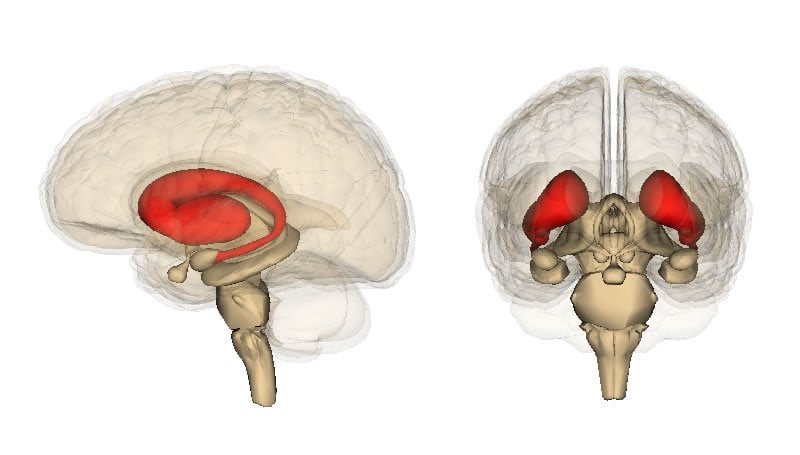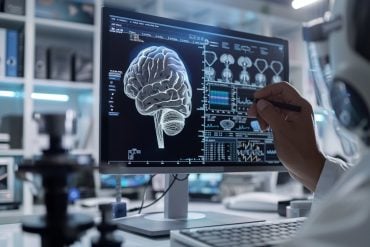Findings open up new avenues for future treatment.
When people with anorexia nervosa decide what to eat, they engage a part of the brain associated with habitual behavior. This finding by researchers at Columbia University Medical Center, New York State Psychiatric Institute, the Mortimer B. Zuckerman Mind Brain Behavior Institute, and New York University was published today in Nature Neuroscience.
Anorexia nervosa is a serious and puzzling illness. Even as its clinical signs have become increasingly recognized, the mortality rate remains among the highest of any psychiatric disorder. A highly stereotyped feature of this illness is the persistent selection of low-calorie, low-fat food, despite the individual’s desire for change. The brain mechanisms underlying this persistent and restrictive eating disorder are unclear.
The researchers used functional magnetic resonance imaging–which tracks activity in the brain in real time–to monitor 21 women with anorexia nervosa and 21 healthy individuals while they made a series of choices about what food to eat. As expected, individuals with anorexia nervosa consistently chose fewer high-fat foods. The brain regions they used to make those choices were also different: for individuals with anorexia nervosa, choices about what to eat were associated with activation in the dorsal striatum, a brain region known to be related to habitual control of actions. Furthermore, activation in fronto-striatal brain circuits during the experiment predicted how many calories they chose to consume in a meal the following day. These are the first data linking abnormalities in brain activity with the salient behavioral disturbance of anorexia nervosa, restrictive food choice.

These findings open up entirely new avenues for treatment development and understanding of disease mechanisms. “We are already developing a new psychotherapy intervention built on principles of habit reversal that helps patients with anorexia nervosa change maladaptive behaviors,” says Joanna Steinglass, MD, one of the lead authors and associate professor of clinical psychiatry at Columbia University Medical Center. “As we improve our understanding of brain mechanisms, new medication targets may emerge as well.”
“This study may also help link anorexia nervosa to disorders like substance abuse, gambling and other conditions that may involve choices related to excessive activity in the dorsal striatum,” added Daphna Shohamy, PhD, author and associate professor of psychology and principal investigator at Columbia University’s Mortimer B. Zuckerman Mind Brain Behavior Institute. “There is tremendous value in studying how the brain makes decisions in both health and disease. Understanding how common brain circuits for decision-making contribute to seemingly unrelated disorders will allow researchers to focus on core disturbances and leverage treatment advances across different disorders.”
Funding: This research was supported in part by the Global Foundation for Eating Disorders and the US National Institute for Mental Health (R01 MH079397, K23 MH076195).
The authors declare no competing financial interests.
Source: Anne Holden – Mortimer B. Zuckerman Mind Brain Behavior Institute
Image Credit: The image is credited to Life Science Databases and is licensed CC-BY-SA-2.1-jp
Original Research: Abstract for “Neural mechanisms supporting maladaptive food choices in anorexia nervosa” by Karin Foerde, Joanna E Steinglass, Daphna Shohamy and B Timothy Walsh in Nature Neuroscience. Published online October 12 2015 doi:10.1038/nn.4136
Abstract
Neural mechanisms supporting maladaptive food choices in anorexia nervosa
People routinely make poor choices, despite knowledge of negative consequences. The authors found that individuals with anorexia nervosa, who make maladaptive food choices to the point of starvation, engaged the dorsal striatum more than healthy controls when making choices about what to eat, and that activity in fronto-striatal circuits was correlated with their actual food consumption in a meal the next day.
“Neural mechanisms supporting maladaptive food choices in anorexia nervosa” by Karin Foerde, Joanna E Steinglass, Daphna Shohamy and B Timothy Walsh in Nature Neuroscience. Published online October 12 2015 doi:10.1038/nn.4136






